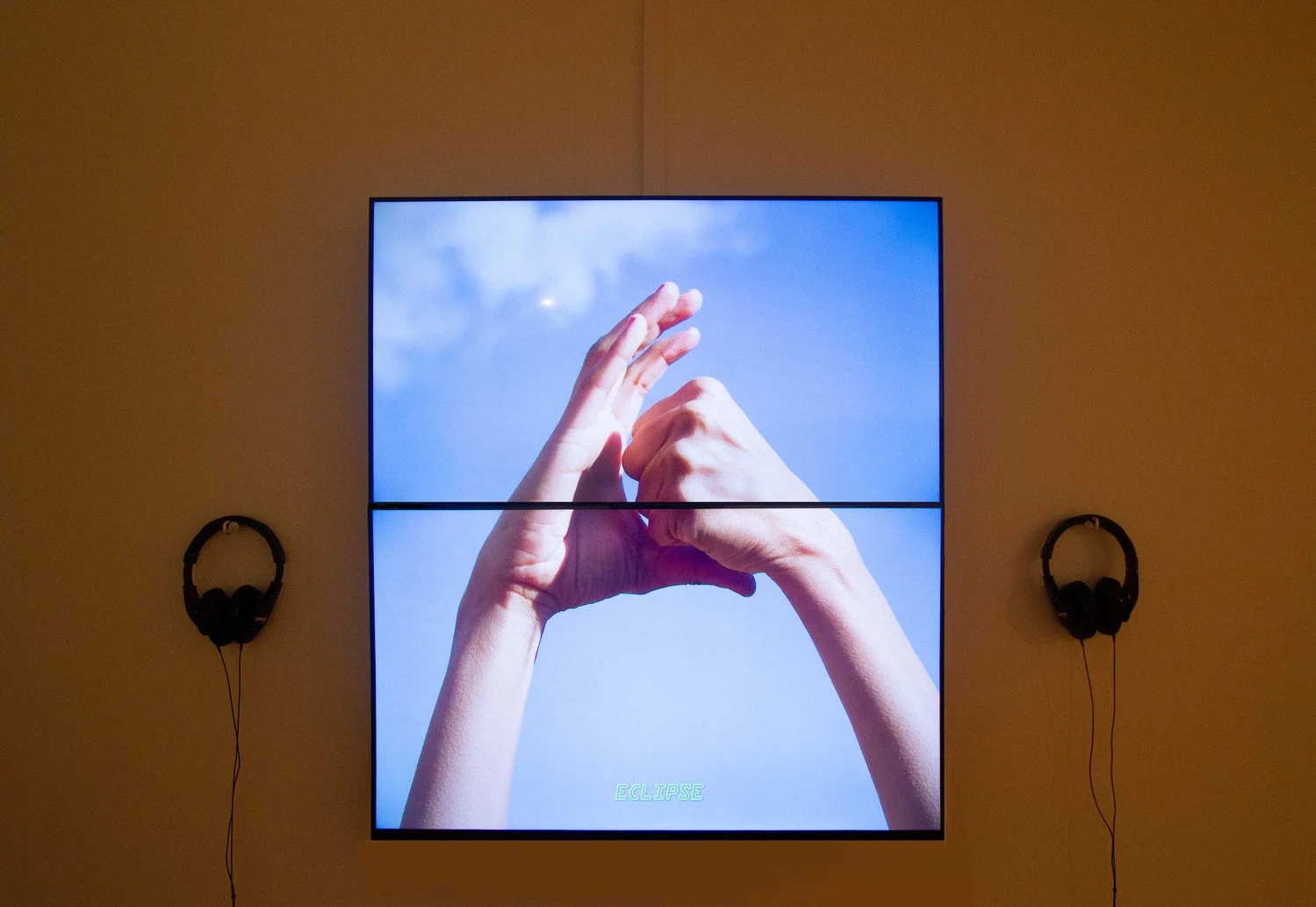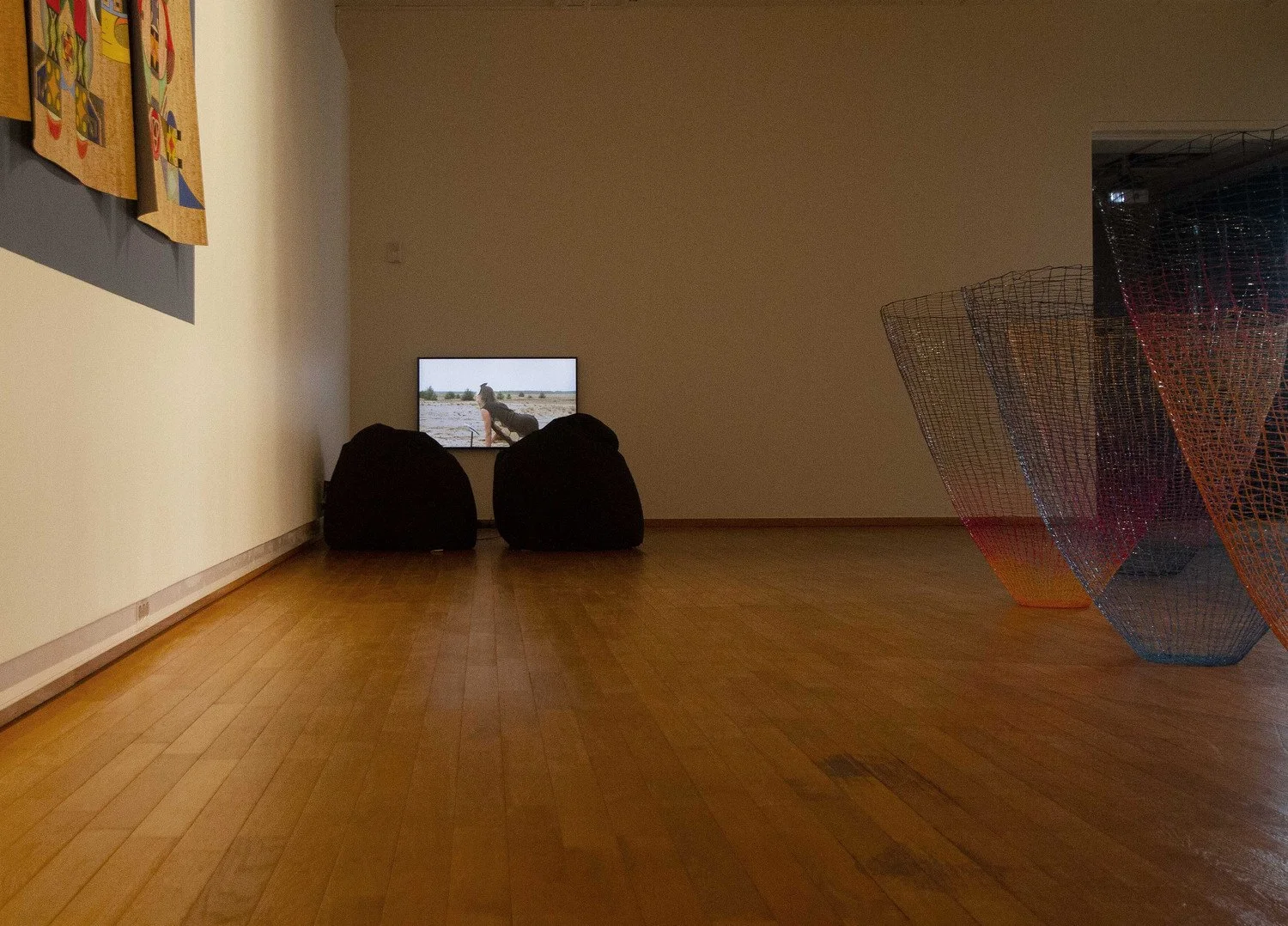Our best machines
are made of sunshine
Opening: May 3, 2025
Exhibition dates: May 4–May 24, 2025
Venue: Møre og Romsdal Kunstsenter (Molde, Norway)
Link
Artists
Kent Chan, Gjertrud Hals, Maryna Makarenko, Hugo de Almeida Pinho, Amalia Valdés, Antonia Baehr, Jule Flierl & Isabell Spengler.
Curated by Vanina Saracino
Die Hörposaune (“The Hearing Trombone”, 2022) by Antonia Baehr, Jule Flierl, and Isabell Spengler. Foto: Anja Weber.
Concept
Our best machines are made of sunshine is a group exhibition conceived by independent curator Vanina Saracino, developed and presented at Møre og Romsdal Kunstsenter in collaboration with MRK’s Artistic Director Jet Pascua. The exhibition presents a selection of works by Kent Chan, Maryna Makarenko, Hugo de Almeida Pinho, Gjertrud Hals, Amalia Valdés, and the collective work by Antonia Baehr, Jule Flierl, and Isabell Spengler.
Between late 2024 and 2025, solar activity reached its peak in the current eleven-year cycle. Some researchers have speculated that heightened solar intensity may correspond to shifts in human behavior, suggesting that increased radiation from our closest star could intensify emotional and social dynamics, even giving rise to humanity’s so-called “greatest madnesses” (Chizhevsky, 2018).
The sun radiates more energy in a single second than humanity has consumed throughout its entire history. Borrowing from Bataille, the central challenge of solar energy is not its scarcity, but how we learn to navigate its overwhelming abundance through intentional expenditure. While current discourse on renewable energy largely focuses on technological solutions and systemic challenges, the shift also requires an expanded understanding of energy—one that is post-anthropocentric, more-than-human, and rooted in metabolic interdependence. After all, “we are energy; our very being consists of the expenditure of quantities of energy” (Stoekl, 2007).
On October 3, 2024, the most intense solar flare in over a decade erupted. A sunspot extended its radiant arm outward, releasing charged particles that traveled toward Earth. Days later, its waves arrived—unseen, but measurable. What forces shape our lives in ways we cannot immediately perceive?
Can the connection between solar activity and terrestrial life offer a lens through which to contemplate excess, resonance, and the cosmic conditions of our daily existence? Within the complex and deeply heterogeneous fabric of humanity, how do we—as individuals, artists, and societies—navigate the currents of solar energy held within our very essence? How do we resonate with the dual pulse of stellar light?
About the works:
Hugo de Almeida Pinho’s video Solar Capital (2023) examines the complex politics of visibility and invisibility that shape our symbolic and historical relationship with the sun, focusing on solar capitalism and the ramifications of energy extraction.
Maryna Makarenko’s Sun Eaters (2023) draws from Eastern European science fiction to imagine a speculative evolutionary path in which humans metabolize sunlight like plants. Rooted in the geopolitics of military conflict and displacement, the work speaks of the urgency of transformation in the face of immobilizing systems.
In Amalia Valdés’ series of paintings Perpetual Memories (2022–2024), symbolic compositions draw from Pre-Columbian cosmologies, family constellations, and sacred geometries to form a personal mythology. Through these totemic paintings, personal and ancestral memory are linked and projected into the eternal cycles of light and energy.
Kent Chan’s 2-channel video Solar Orders (2024) envisions futures in which the sun becomes the central organizing principle of life. In response to the real-world expansion of the tropics due to climate change, the work affirms a reordered metabolism: one where energy, society, and planetary rhythms are aligned with the sun’s excess.
Gjertrud Hals’ sculptural series Eir and Scala articulate structures that hold, connect, and transmit. Drawing from her upbringing on Norway’s northwestern coast, Hals weaves intricate networks that evoke biological and cosmic systems. The sun, while never directly depicted, emerges as a generative force within a web of material and energetic interdependence.
Die Hörposaune (“The Hearing Trombone”, 2022) by Antonia Baehr, Jule Flierl, and Isabell Spengler explores the resonant space between voice and body, playing with perception and acoustic embodiment. Through layered gestures and sonic experimentation, the piece affirms a multisensory entanglement, where energies circulate through and beyond language, echoing the sun’s own omnipresent pulse.
“Our best machines are made of sunshine” is drawn from Donna Haraway’s book A Cyborg Manifesto (1985).
Photos: Amalia Valdés












